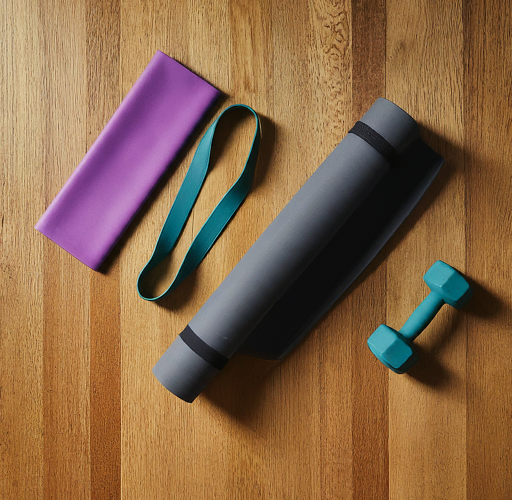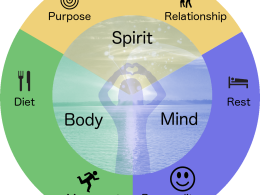Fit for Life: Craft Your Perfect Balanced Routine
Feeling lost in the labyrinth of fitness trends and workout routines? You’re not alone. Many people, especially busy professionals and parents, struggle to create a sustainable fitness plan that fits their lifestyle and keeps them motivated. The good news is, achieving long-term success doesn’t require spending hours at the gym or following a rigid program that feels like a chore. The key lies in crafting a balanced routine that caters to your specific needs and preferences.
Why Balance Matters in Your Fitness Journey
Think of your fitness journey as building a house. A strong foundation is crucial for stability and longevity. Just like a house needs a combination of support beams, walls, and a roof, your fitness routine needs a balance of different elements to ensure well-rounded results. Here’s why incorporating balance is essential:
- Prevents Injuries: Focusing solely on one aspect of fitness, like intense cardio, can lead to muscle imbalances and overuse injuries. A balanced routine strengthens different muscle groups and improves flexibility, reducing your risk of getting hurt.
- Boosts Motivation: Let’s face it, sticking to the same repetitive workout day in and day out can get boring fast. A balanced routine incorporates variety, keeping things fresh and exciting, which is crucial for long-term motivation.
- Maximizes Results: By addressing different fitness components, you get a more well-rounded workout. This translates to better overall health, improved endurance, increased strength, and better weight management.
The Three Pillars of a Balanced Routine
Now that we understand the importance of balance, let’s delve into the three key pillars that form the foundation of a successful fitness routine:
- Cardio: This refers to any exercise that elevates your heart rate and gets your blood pumping. It’s essential for improving cardiovascular health, burning calories, and boosting your overall fitness level. Think brisk walking, running, swimming, cycling, dancing – anything that gets your heart rate up and keeps it elevated for a sustained period.
- Strength Training: Building muscle isn’t just about aesthetics; it’s about creating a strong foundation for your body. Strength training helps increase bone density, improve metabolism, and enhance your overall physical capabilities. Don’t be intimidated by weightlifting machines; bodyweight exercises like push-ups, squats, and lunges are a great place to start. Resistance bands and free weights can be gradually incorporated as you progress.
- Flexibility: Often the neglected stepchild of fitness routines, flexibility plays a vital role in maintaining a healthy range of motion, reducing pain, and preventing injuries. Yoga, Pilates, and regular stretching routines can significantly improve your flexibility and make everyday movements feel more effortless.
The table below summarizes the three pillars of a balanced routine, highlighting their benefits and offering some sample activities:
The Three Pillars of a Balanced Routine
| Fitness Component | Benefits | Sample Activities |
| Cardio | Improves heart health, endurance, and burns calories | Brisk walking, running, swimming, cycling, dancing |
| Strength Training | Builds muscle, increases bone density, and boosts metabolism | Bodyweight exercises (push-ups, squats, lunges), weight lifting, resistance bands |
| Flexibility | Improves range of motion, reduces pain, and prevents injuries | Yoga, Pilates, stretching routines |

Finding Your Fitness Sweet Spot
Now that you understand the building blocks of a balanced routine, it’s time to personalize it to fit your unique needs and lifestyle. Here’s how to find your fitness sweet spot:
- Assessing Your Needs and Goals: What are you hoping to achieve with your fitness journey? Do you want to lose weight, improve endurance, build muscle, or simply feel more energized? Identifying your goals will help you prioritize the different components of your routine.
- Scheduling Realistic Workouts: Be honest with yourself about how much time you can realistically dedicate to exercise each week. Aim for consistency over intensity. Starting with shorter, manageable workouts that you can stick to is more sustainable than planning an hour-long gym session that you only manage once a week.
Making Fitness Fun and Sustainable
Here’s the secret weapon for long-term fitness success: make it enjoyable! Here are some tips to keep your workout routine fun and sustainable:
- Variety is Key: Don’t get stuck in a rut! Explore different activities like hiking, group fitness classes, dancing, or even trying a new sport. This keeps things exciting and prevents boredom.
- Find a Workout Buddy: Exercising with a friend or family member can provide accountability, motivation, and a healthy dose of competition. It can also make workouts more social and enjoyable.
- Celebrate Your Achievements (Big and Small!): Acknowledge your progress, no matter how small it may seem. Did you run a little further this week? Celebrate! Reaching even minor milestones keeps you motivated and reminds you how far you’ve come.
Building a Balanced Routine: Week-at-a-Glance Example
Here’s an example of what a balanced routine might look like spread out over a week:
| Day | Activity | Duration | Focus |
| Monday | Brisk Walking | 30 minutes | Cardio |
| Tuesday | Strength Training (Upper Body) | 20-30 minutes | Strength |
| Wednesday | Rest or Active Recovery (Yoga/Stretching) | 15-20 minutes | Flexibility |
| Thursday | Swimming | 45 minutes | Cardio |
| Friday | Strength Training (Lower Body) | 20-30 minutes | Strength |
| Saturday | Active Rest (hiking, biking) | 1-2 hours | Cardio & Flexibility (depending on activity) |
| Sunday | Rest and Relaxation | – | – |
Remember, this is just a sample. Feel free to adjust the activities, duration, and frequency to fit your schedule and preferences. The key is to find a routine you enjoy and can stick with over the long term.
The Takeaway: Fitness for Life, Not Just a Phase
Building a sustainable fitness routine isn’t about quick fixes or fad diets. It’s about incorporating healthy habits into your lifestyle for long-term well-being. Here are some additional resources to get you started:
- The American Council on Exercise: This website provides a vast library of exercises with detailed instructions and modifications for various fitness levels.
- The National Institutes of Health: This resource offers science-backed guidelines on physical activity for different age groups and health conditions.
Remember, fitness is a journey, not a destination. There will be bumps along the road, days when motivation wanes, and workouts that feel tougher than usual. But don’t get discouraged! Embrace the process, celebrate your victories, and most importantly, find joy in moving your body. With dedication and consistency, you can create a balanced routine that fits seamlessly into your life and sets you on the path to a healthier, happier you!










